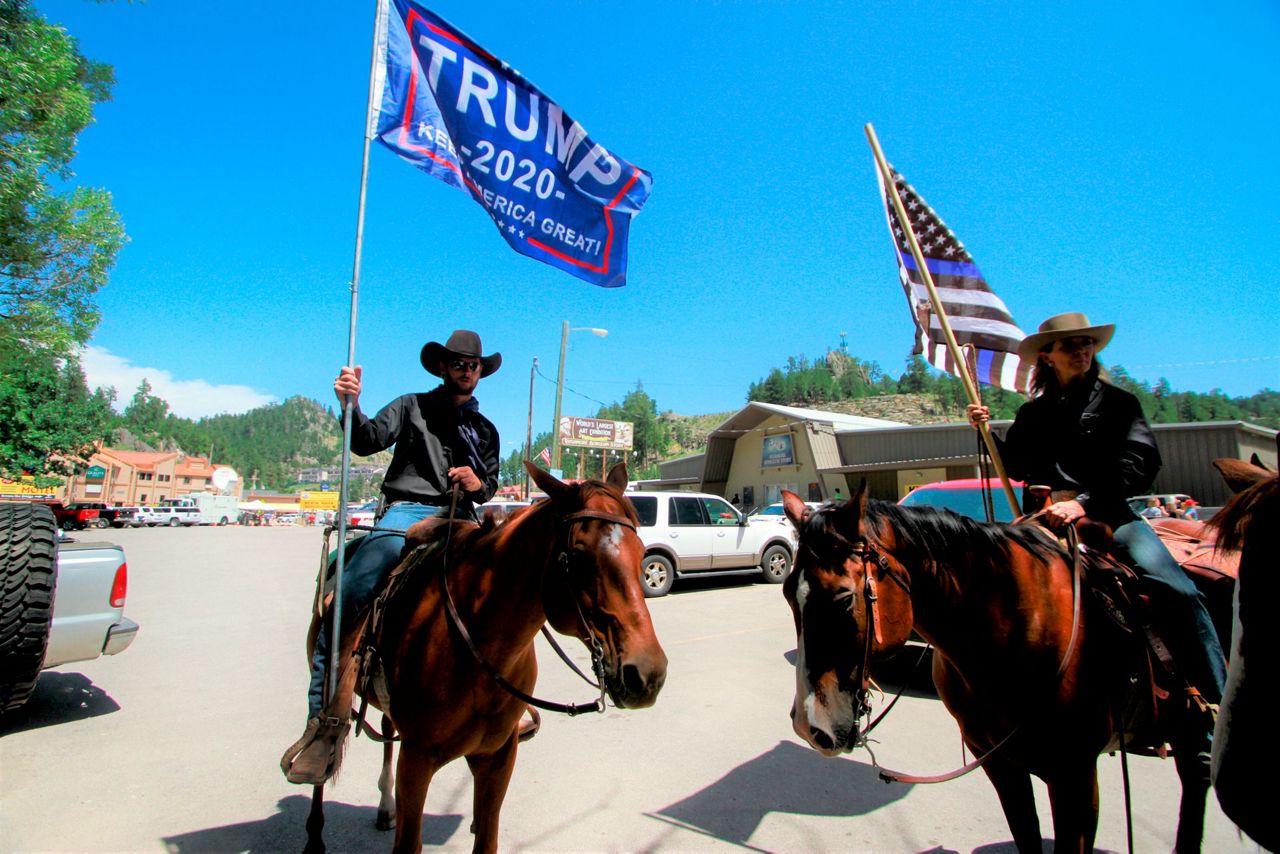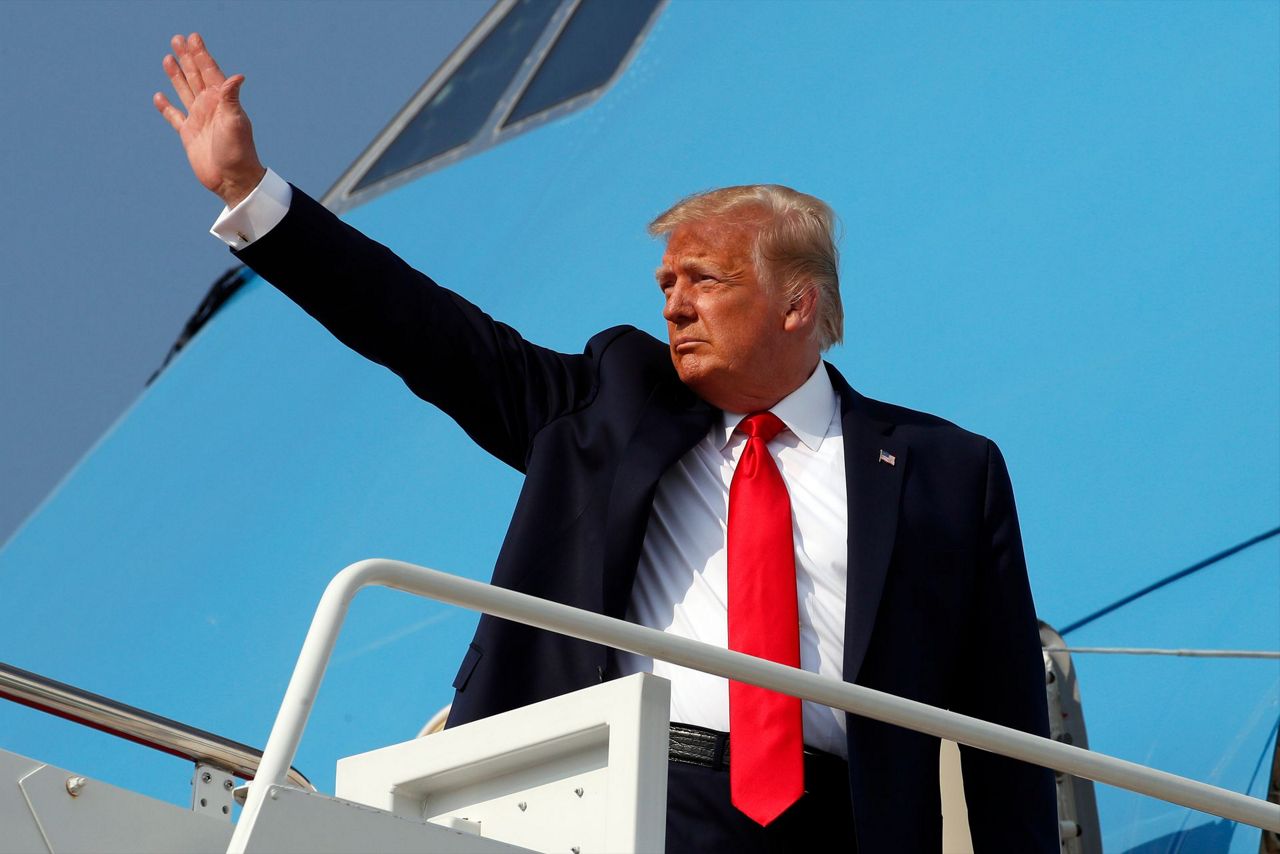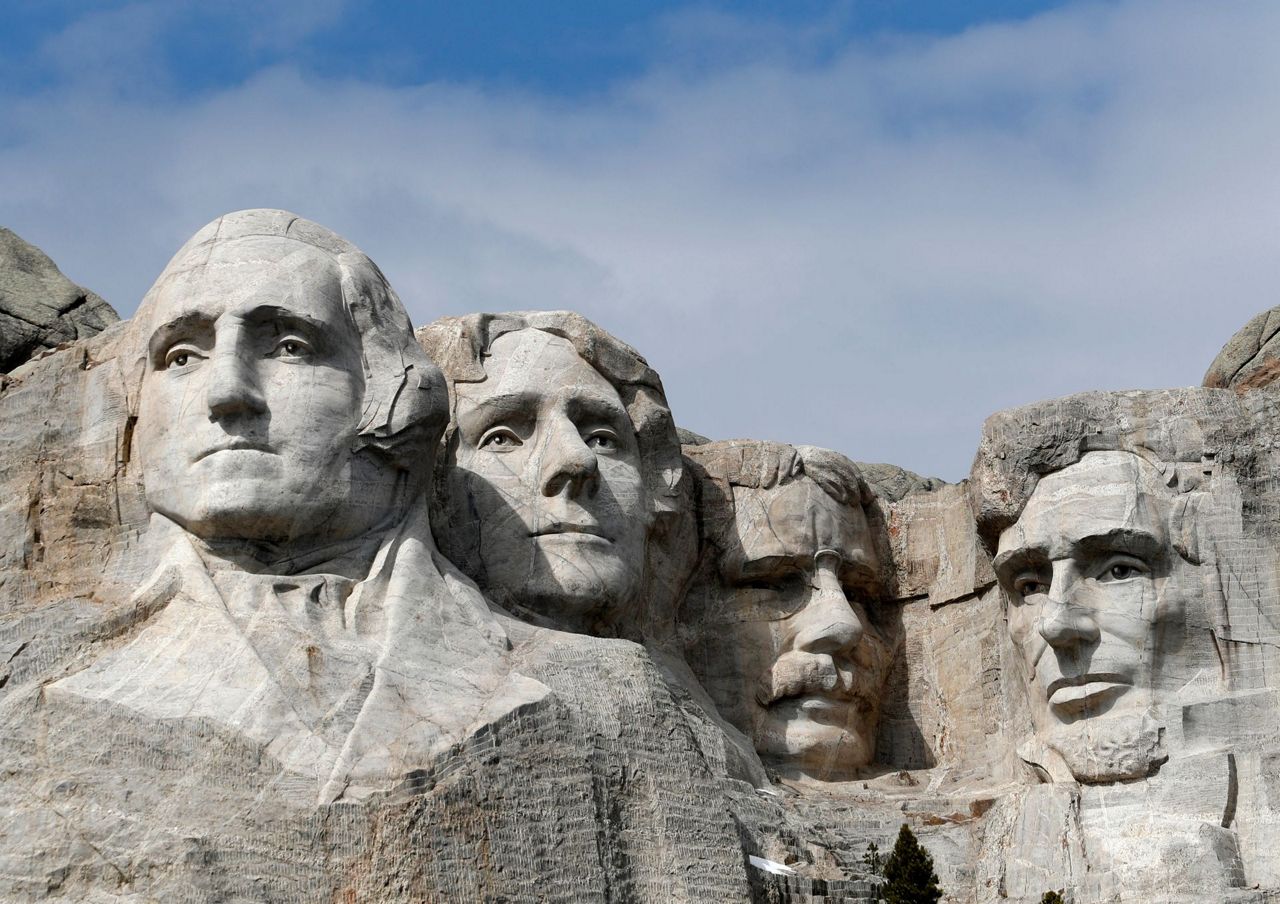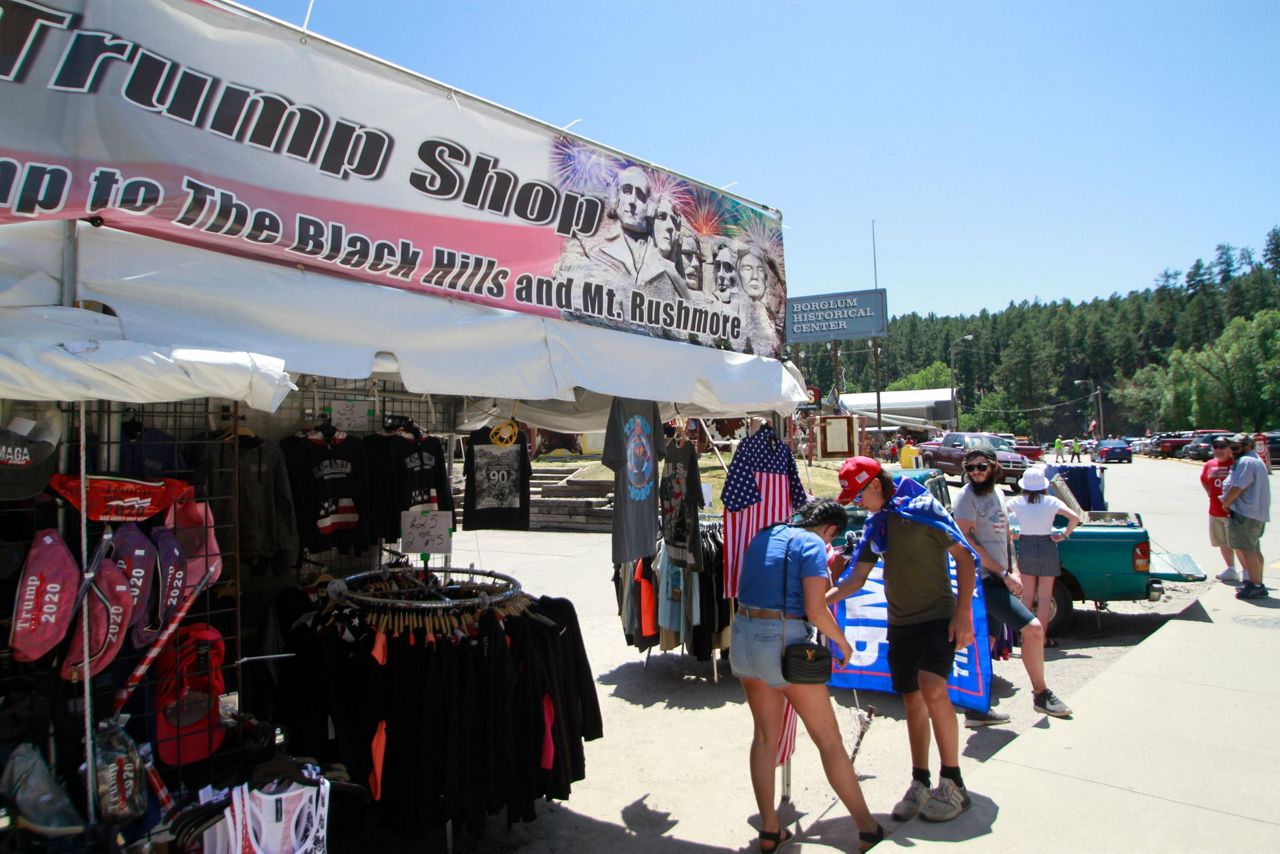KEYSTONE, S.D. (AP) — President Donald Trump planned a fiery Mount Rushmore speech Friday night including denunciations of protesters he says are trying to “tear down” the nation's history. He's adding the condemnation of those who pull down statues to a big fireworks show and his more traditional July Fourth praise of America's past and values.
Hours before the event, protesters blocked a road leading to the monument. Authorities worked to move the demonstrators, mostly Native Americans protesting that South Dakota's Black Hills were taken from the Lakota people against treaty agreements.
One group parked three vans across the road and took the tires from two of them to make it more difficult to remove them. Several demonstrators climbed on top of the vans chanting “Land back!” Police and National Guard soldiers moved in and a standoff ensued, with police using pepper spray on several protesters. Tow trucks then began removing the vans from the road.
The president has spoken forcefully against other protesters in Washington, D.C., and other cities who have tried to topple Confederate monuments and statues honoring those who have benefited from slavery, planned to target “the left wing mob and those practicing cancel culture," said a person familiar with his remarks and describing them only on condition of anonymity.
The president was to preside over a fireworks display at an event expected to draw thousands, even as coronavirus cases spike across the country.
Trump was expecting a South Dakota show of support, with the state Republican Party selling T-shirts that feature Trump on the memorial alongside George Washington, Thomas Jefferson, Theodore Roosevelt and Abraham Lincoln. But concern about the coronavirus risk and wildfire danger from the fireworks, along with the Native American groups' protests were also present.
Republican Gov. Kristi Noem, a Trump ally, has said social distancing won't be required during the event and masks will be optional. Event organizers were to provide masks to anyone who wanted them and planned to screen attendees for symptoms of COVID-19.
The Republican mayor of the largest city near the monument, Rapid City, said he would be watching for an increase in cases after the event, the Rapid City Journal reported.
Enthusiastic attendees were unlikely to disqualify themselves "because they developed a cough the day of or the day before,” Mayor Steve Allender said.
The small town of Keystone, which lies a couple of miles from the monument, was buzzing with people Friday hoping to catch a glimpse of the fireworks and the president. Many wore pro-Trump T-shirts and hats. Few wore masks.
“This is going to rank up in the top Fourth of Julys that I talk about,” said Mike Stewhr, who brought his family from Nebraska.
Mike Harris of Rapid City, who said he was a Republican, wore a mask and waved an anti-Trump flag. He also was sporting a handgun on each hip. He said he was worried the event would spark a COVID-19 outbreak.
“I think it's a bad example being set by our president and our governor,” Harris said.
Robin Pladsen, director of the Keystone Chamber of Commerce, handed out face masks and hand sanitizer from a tent. She said the tourist influx would help businesses pay back loans they had taken out to survive the economic downtown but acknowledged the health risk for the town.
Leaders of several Native American tribes in the region also raised concerns that the event could lead to virus outbreaks among their members, who they say are particularly vulnerable to COVID-19 because of an underfunded health care system and chronic health conditions.
“The president is putting our tribal members at risk to stage a photo op at one of our most sacred sites,” said Harold Frazier, chairman of the Cheyenne River Sioux Tribe.
Some Native American groups used Trump's visit to protest the Mount Rushmore memorial itself, pointing out that the Black Hills were taken from the Lakota people.
More than 100 protesters, many Lakota, lined the road leading from Keystone to the monument holding signs and playing Lakota music in 95-degree heat. Some held their fists in the air as cars loaded with event attendees passed by. Others held signs that read “Protect SoDak's First People,” “You Are On Stolen Land” and “Dismantle White Supremacy."
“The president needs to open his eyes. We're people, too, and it was our land first,” said Hehakaho Waste, a spiritual elder with the Oglala Sioux tribe.
Several people who once oversaw fire danger at the national memorial have said setting off fireworks over the forest was a bad idea that could lead to a large wildfire. Fireworks were called off after 2009 because a mountain pine beetle infestation increased the fire risks.
Noem pushed to get the fireworks resumed soon after she was elected, and enlisted Trump's help. The president brushed aside fire concerns earlier this year, saying, “What can burn? It's stone.”
Trump made no mention of the fire danger Thursday.
“They used to do it many years ago, and for some reason they were unable or unallowed to do it,” he said. "They just weren’t allowed to do it, and I opened it up and we’re going to have a tremendous July 3 and then we’re coming back here, celebrating the Fourth of July in Washington, D.C.”
Trump has presided over a several large-crowd events — in Tulsa, Oklahoma, and at an Arizona megachurch — even as health officials warn against large gatherings and recommend face masks and social distancing. He plans a July Fourth celebration on the National Mall in Washington despite health concerns from D.C.’s mayor. Trump and first lady Melania Trump plan to host events from the White House South Lawn and from the Ellipse.
___
Associated Press writers Jill Colvin in Washington and Todd Richmond in Madison, Wis., contributed to this report.
Copyright 2020 The Associated Press. All rights reserved. This material may not be published, broadcast, rewritten or redistributed without permission.






